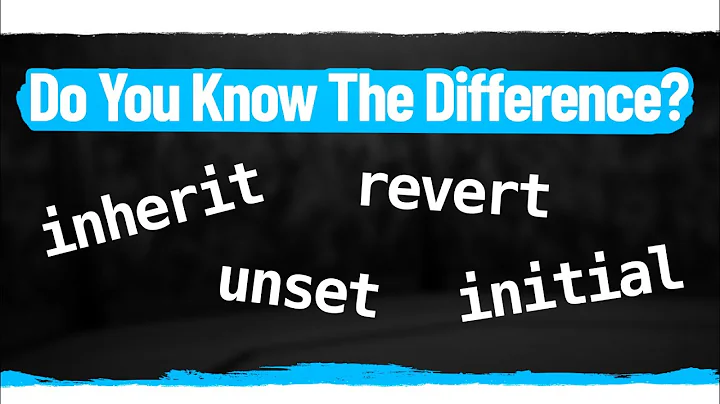Can the :before and :after pseudo-elements inherit height from the parent element?
Solution 1
No. The only way that pseudo-elements can inherit values from the parent of their generating element is when the generating element itself is also inheriting from its parent.
This is because inheritance occurs from a parent to a child, one level at a time. For inheritance to work across several levels of descendants, every descendant must inherit.
As an example, consider the following HTML:
<div class="parent">
<div class="child">
</div>
</div>
With the following CSS:
.parent {
width: 100px;
height: 100px;
}
.parent > .child:before, .parent > .child:after {
content: '';
position: absolute;
width: inherit;
height: inherit;
}
This will not work because even though the pseudo-elements have values of inherit, the element generating them, that is, .parent > .child, does not inherit from .parent. Instead, they inherit the default value of auto for both properties.
In order for this to work you will need to have .parent > .child inherit as well:
.parent {
width: 100px;
height: 100px;
}
.parent > .child {
width: inherit;
height: inherit;
}
.parent > .child:before, .parent > .child:after {
content: '';
position: absolute;
width: inherit;
height: inherit;
}
Solution 2
I know this question is fairly old, but I stumbled on it today. According to http://www.w3.org/TR/CSS21/generate.html, the accepted answer isn't accurate:
The
:beforeand :after pseudo-elements inherit any inheritable properties from the element in the document tree to which they are attached.
I just tried inheriting width and it worked.
Solution 3
Concerning these answers, I was just bumping into the aspect of transformation. It may resemble on inheritance; I hope it helps somebody.
Having this:
<div class="box">
<div class="frame"></div>
</div>
and this transformation for frame:
transform: rotate(10deg);
Then the frame:before and frame:after are also transformed. Yet they do not have the properties of frame, such as width and height, which is like explained above. Full example see here:
http://jsfiddle.net/chafpgwt/1/
On this fiddle, there are three nested squares, each rotated by 10 deg, but the transform definition is only set for the frame, not for frame:after neither frame:before.
It is a pitfall to think transformations also are not "inherited", as everything else is neither. The transformation has influence in another context.
Solution 4
If you want to use your ::before pseudo-element to implement a background the trick is to make sure that you positioned your element absolute and his parent relative. Make also sure you set the width of the parent.
Example
&__item {
position: relative;
width: 100%;
height: 100%;
&::before {
content: "";
background-color: red;
background-size: 100%;
position: absolute;
top: 0;
left: 0;
width: 100%;
height: 100%;
}
}
Related videos on Youtube
AKG
Updated on August 27, 2021Comments
-
AKG over 2 years
I am wondering whether the
:beforeand:afterpseudo-elements can inherit the height from parent using theinheritvalue, without the actual element doing so?-
 Adam Libuša over 2 yearsNot sure about your use case, but if you just need :before/:after to have the same height as the parent element, then
Adam Libuša over 2 yearsNot sure about your use case, but if you just need :before/:after to have the same height as the parent element, thenheight: 100%in the pseudoelement works quite well.
-
-
BoltClock over 9 yearsI'll edit my answer to clarify. I think it was too short and therefore it might have been confusing.
-
AKG over 9 yearsWhen I posed the question, I didn't understand how the
::beforeand::afterpseudo elements worked. Take this situation:divA > divB::after- the intent of my question was to know whetherdivB:after could inheritdivA's properties. In my phrasing of the question: _parent element_ referred todivA` and actual element referred todivB. I hope my question was interpreted in this manner. -
joe over 9 yearsthanks @BoltClock, it's much more clear now. AKG, i think your question was originally understood correctly, but all is more clearer now anyway :)






